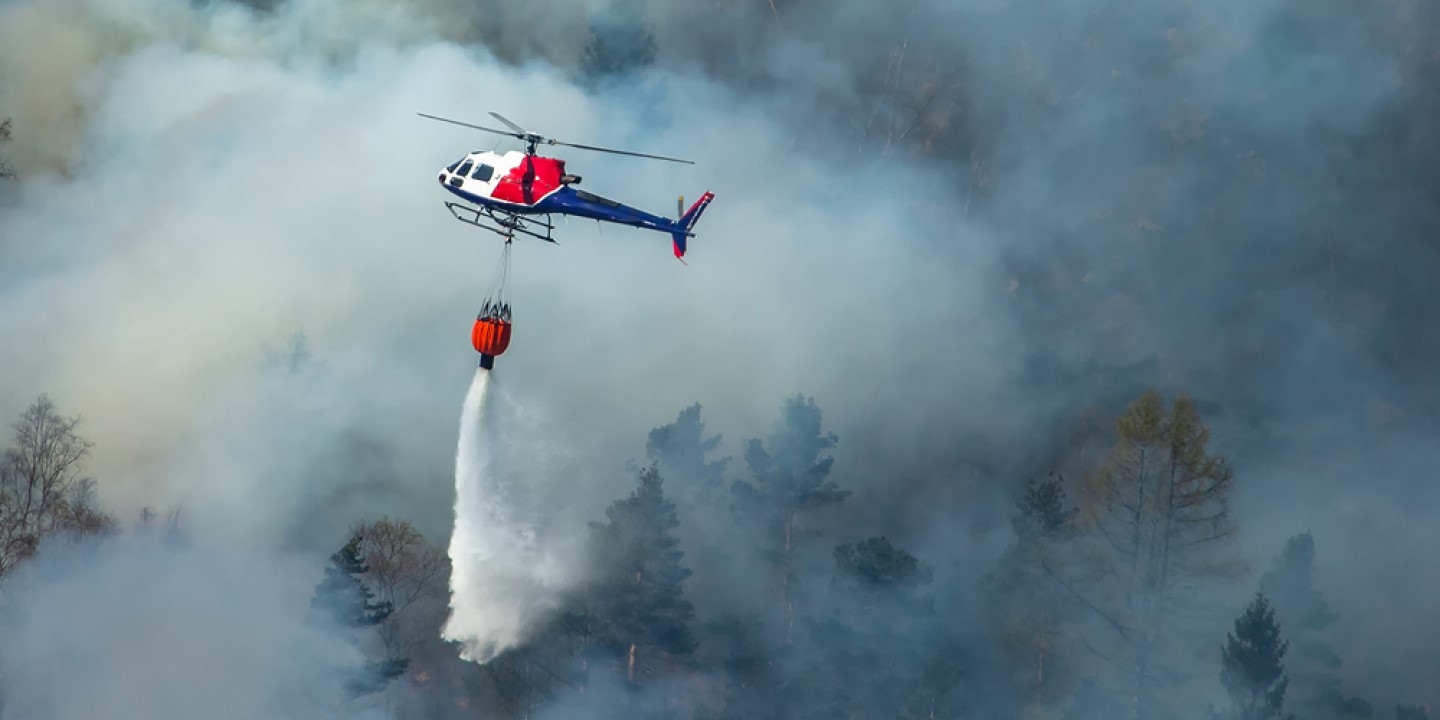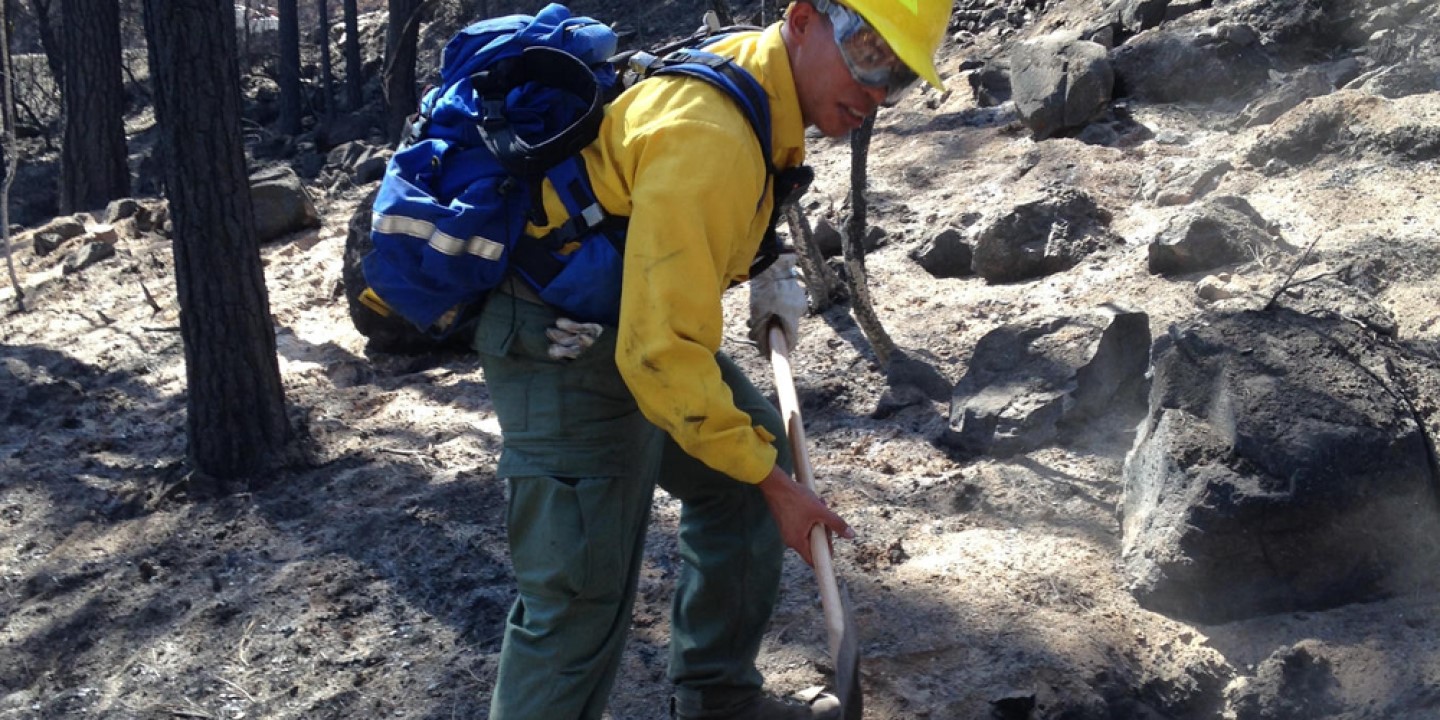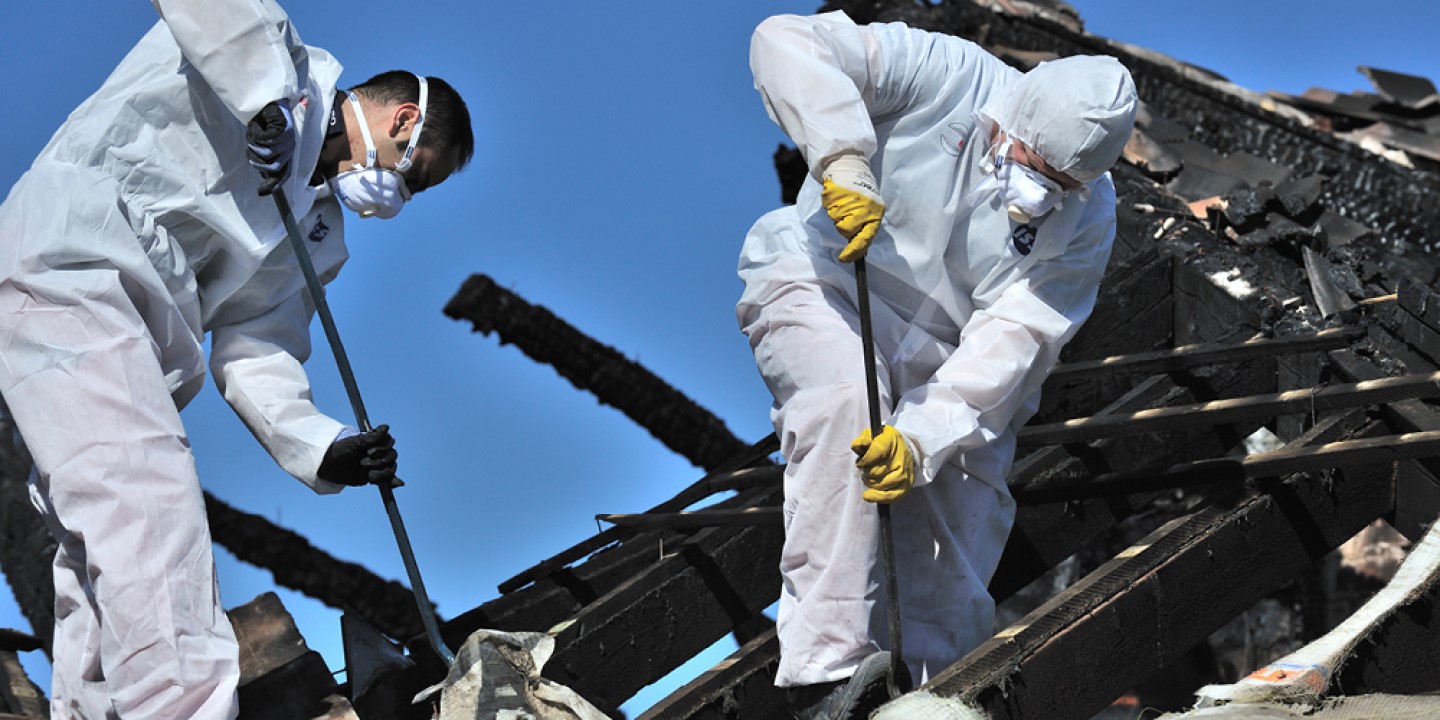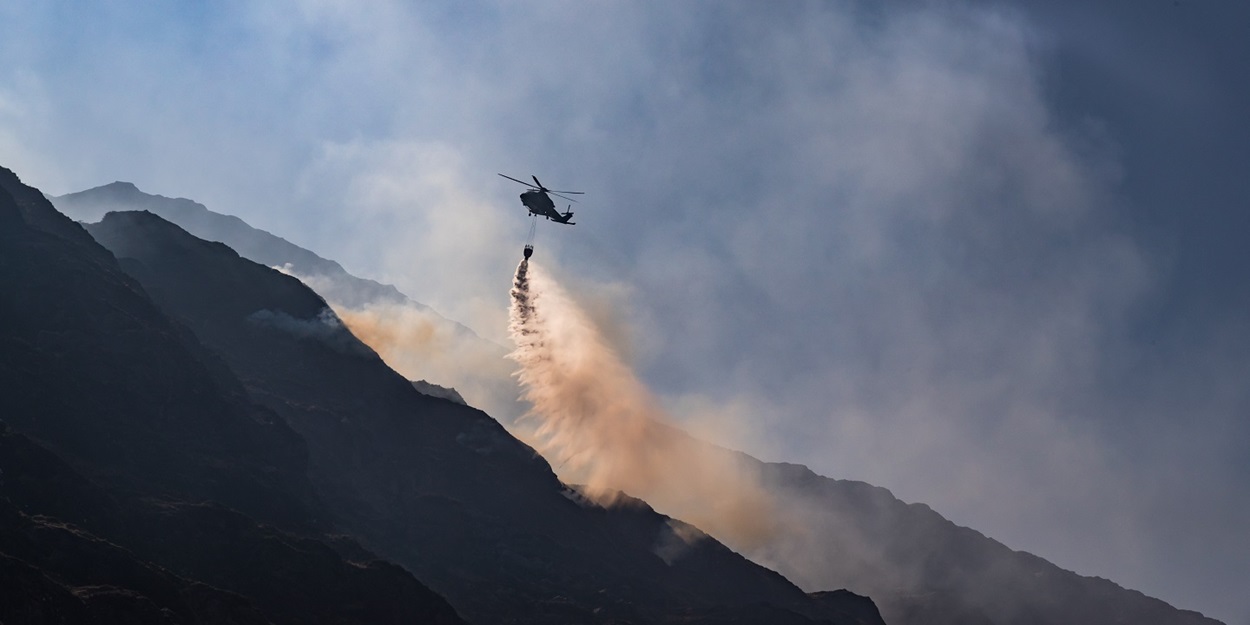Wildfires: Understanding a growing risk
Climate and EnergyArticleJune 8, 2023
Wildfire season in the U.S. and Canada typically occurs during the warm summer months. But climate change has led to a gradual warming of the planet and wildfire risk that occurs year round and in regions that historically have not faced wildfires.
Looking at the bigger picture, NASA data shows a steady rise in fires in the Western U.S. over the last six decades. Australia was already the most fire-prone continent in the world, but an increase in the number of extreme heat waves and a significant reduction in rainfall since the 1970s have combined to create ongoing drought conditions that contributed to the historic, devastating bushfires of 2019-2020.1 The 2016 Fort McMurray wildfire in Alberta was the costliest disaster in Canadian history, and a recent study projects extreme fire risks in Western Canada could become as much as six times more likely in this decade alone.2
While some unpredictable contributors, including lightning strikes and acts of arson, are major factors in wildfire occurrences, the scientific consensus is that climate change will continue to result in larger, more intense fires in regions prone to them.3
So, in facing this volatile reality, businesses, communities and individuals need to plan early and intelligently for mitigation, response and recovery efforts (see Wildfire Resource Hub for more information). Before making those plans, however, a general understanding of the nature of wildfires and evolving conditions is helpful.
What causes wildfires?
There are three components required for a wildfire, often referred to as the “Fire Triangle”4:
- A heat source: This can be anything from the sun to a bolt of lightning to a lit match.
- Fuel: This can be any flammable material, including dry, dead grass, leaves and trees; and some forms of living vegetation.
- Oxygen: Fire feeds off oxygen, which increases in high winds, helping spread the fire.
Wildfires are a natural — and often essential — part of our ecosystem, but like destructive storms, their power can quickly overwhelm regions and their inhabitants. Moreover, while there are natural triggers for fires, human activity is estimated to be responsible for nearly 85% of wildland fires in the U.S.5
Human-caused wildfire triggers include:
- Campfires left unattended
- Intentional acts of arson
- Burning of debris
- Equipment use (including power lines) and malfunctions
- Discarded cigarettes
- Fireworks
Prescribed fires (or controlled burns), set intentionally for a number of beneficial reasons including reduction of more extreme wildfires, have also sometimes gotten out of control. While still considered an important strategy by many experts, with increasing heat and drier conditions, there is serious debate about when and where to employ controlled burns.
Whether natural or man-made, in terms of wildfires growing to uncontrollable levels, the trigger is less important than the conditions for spread and intensity.
Conditions that increase wildfire risks
Our ecosystem is always in a state of delicate balance and there are several factors that can adversely impact that harmony. In terms of wildfire risks, these include:
- Extreme heat
- Droughts
- Insects and disease that cause trees to die prematurely
- Deforestation
- Bad land management
- High winds
Excessive heat, droughts, insects and disease have plagued human and animal life long before climate change was on anyone’s radar, but most of the conditions above have been impacted by or significantly contributed to the effects of climate change.
The historically warmer, drier conditions we are experiencing result in longer heat waves, increased drought, lower soil moisture content, the spread of damaging insects, and an increase in combustible fuels created by dead trees and plants.6 Deforestation (mainly caused by logging) and poor land management have resulted in an increase in wildfires in regions where historically they were very rare, notably the rainforests in the Amazon and Indonesia.
It’s also important to note that wildfires can lead to increased risks for flooding, mudslides and debris flow. The destruction of trees and grasslands that could absorb rainfall can leave areas downhill and downstream more vulnerable to these events.7
Types of wildfires
There are three main categories of wildfire8,9:
- Ground fires ignite within the soil, feeding off organic material like plant roots and smoldering until they grow into a surface or crown fire.
- Surface fires burn in dead or dry vegetation, such as parched grass or fallen leaves or branches at ground surface level.
- Crown fires burn through the top layer of foliage on a tree. They are the most intense type of these three and often difficult to control.
Wildfires can also be defined by regions and their associated climates. “Wildfire” has widely replaced “forest fire” as common terminology for wildland fires, but “forest fire” can be useful in distinguishing fires in woodlands from those in grasslands or shrublands. The latter fires are often called “brush fires,” not to be confused with “bushfire,” the common general term for woodland and grassland wildfires in Australia.
Where are wildfire risks growing?
Evaluating wildfire risks globally is tricky and sometimes can be misleading. Frequency is a major concern in some areas, but growing severity and duration can be equally troubling indicators in regions where the overall number of fires may actually be decreasing.
While fatalities are the most tragic immediate outcome of a fire, they are more an indicator of the success or lack thereof in responding to the fire than the level of risk. Small fires that are poorly managed or that ignite unexpectedly can be more lethal than fires of historic size or duration where evacuations of populated areas were effective.
Similarly, immediate man-made conditions — such as the massive, industry-driven deforestation of the Amazon — can be hard to compare from a data standpoint to longstanding and evolving climate-driven conditions, whether driven by human activity or not.
However, it’s useful to look at regions that suffered from major, recent impacts of wildfires; the conditions that led to those fires; and what indicators may be for the future:
The United States: The 2020 wildfires wreaked havoc across California (which experienced six of the 20 largest fires in its history), Washington and Oregon. Expectations for more droughts and increasing landscape degradation mean the Western U.S. will continue to be at high risk for fires for the foreseeable future.10 Meanwhile, the Southwest U.S. is also expected to grapple with more high-severity fires that were less characteristic of the region in earlier periods.11
Canada: Fire season is getting longer in almost all areas of the nation and by 2100, it could become more than a month longer in central and eastern Quebec, and northern British Columbia.12
Australia: The Australian summer ends at the close of February, and extreme fire and flooding events are both seen as the result of a warming atmosphere.13 So, if this climactic trend continues as expected, more massive wildfires could be in the offing.
The Amazon rainforest: The previously mentioned deforestation in South America has long posed an urgent climate crisis and many scientists fear the region is at a tipping point for recovery. Reforestation efforts, like the Zurich Forest Project, are essential to avoiding fiercer fires and truly dire, global consequences. It will take many more concentrated efforts from governments, businesses and organizations around the world to bring this region back from the brink.
Indonesia: The Indonesian rainforest crisis may garner fewer headlines than the one in the Amazon, but consider this: Areas larger than the size of the Netherlands have burned in recent years, with 30% of the fires being tied to pulpwood and palm oil enterprises.14 As in the Amazon, a change in outlook is needed that prioritizes this monumental environmental emergency over understandable economic concerns in the region.
The Arctic: Warming more than twice as quickly as the rest of the world, the Arctic surpassed its worst fire season in 60 years in 2020.15 Though Arctic wildfires are not uncommon in the region’s Siberian south, the emergence of so-called “zombie fires” (smoldering, holdover fires from a previous season that can reignite) and fires in areas further north once considered fire-resistant is alarming scientists.16
The areas above are by no means the only ones facing escalating wildfire challenges. 2018 saw a worrisome rise in fires across Europe, and while African wildfires (which account for some 70% of the fires in the world) have been historically more controlled and in harmony with the continent’s ecology, there are growing concerns over increased “slash and burn” strategies as global trade grows.17
Economic impacts of wildfire
When climate factors impacting wildfire risks are addressed, too often the discussion breaks down to an ecology versus economy argument. But this is shortsighted considering the deep economic costs of wildfire disasters.
The costs of the 2020 wildfires in the U.S. are still being analyzed and the financial toll it took may never be fully captured. But in 2018 (a record-setting year for acreage burned until 2020 dwarfed it), California wildfires cost the U.S. economy over $148 billion (about .7% of the total U.S. gross domestic product) and nearly $46 billion of that was lost outside of the state.18
With the interconnected nature of countless businesses, both domestically and globally, it isn’t hard to see why costs are not contained by state or national borders. Supply chain interruptions, rising insurance losses, and the potential impact on workforces of growing migration away from wildfire-prone regions are just some of the issues to contend with.
As with hurricanes and more extreme storms, wildfires are events that require both long-term and immediate planning. Zurich will continue making resources available to help with that planning, including the articles below offering guidance on mitigation, response and recovery actions.
- Abram, Nerilie. “Australia’s Angry Summer: This Is What Climate Change Looks Like.” Scientific American. 31 December 2019
- Kirchmeier-Young, M.C., Zwiers, F.W., Gillett, N.P. et al. “Attributing extreme fire risk in Western Canada to human emissions.” Climactic Change. Vol. 144, issue 2. 2017.
- Gray, Ellen. “Satellite Data Record Shows Climate Change's Impact on Fires.” NASA: Global Climate Change: Vital Signs of the Planet. 10 September 2019.
- “Wildfires 101.” National Geographic video. 23 October 2017.
- National Park Service. “Wildfire Causes and Evaluations.” Accessed 21 June 2021.
- “Climate change increases wildfire risk.” Washington State Department of Ecology. Accessed 21 June 2021.
- Lada, Brian. “How wildfires leave communities vulnerable to flooding, mudslides for years.” AccuWeather. Accessed 23 June 2021.
- “Wildfires.” National Geographic Resource Library.
- National Park Service. “Wildland Fire Spread and Suppression.” Accessed 21 June 2021.
- Singh, Maanvi. “'Unprecedented': the US west’s wildfire catastrophe explained.” The Guardian. 12 September 2020.
- Mueller, Stephanie E., et al. “Climate relationships with increasing wildfire in the southwestern US from 1984 to 2015.” Forest Ecology and Management, Vol. 460. 15 March 2020.
- Government of Canada. “Fire weather: Increases in length of fire season will affect forest ecosystems and both human health and safety.” 3 December 2020.
- Perry, Nick. “Australia endures droughts, fires, floods and marauding mice.” Associated Press. 26 March 2021.
- Ungku, Fathin. “Nearly a third of Indonesia forest fires are in pulp, palm areas: Greenpeace.” Reuters. 21 October 2020.
- Penney, Veronica. “It’s Not Just the West. These Places Are Also on Fire.” The New York Times. 23 September 2020.
- Sommer, Shelly. "The Arctic is burning in a whole new way.” Institute of Arctic and Alpine Research. University of Colorado Boulder. 28 September 2020
- Petesch, Carley. “Africa is the ‘fire continent’ but blazes differ from Amazon.” Associated Press. 28 August 2019.
- University College London. “Full cost of California’s wildfires to the US revealed.” 7 December 2020.



